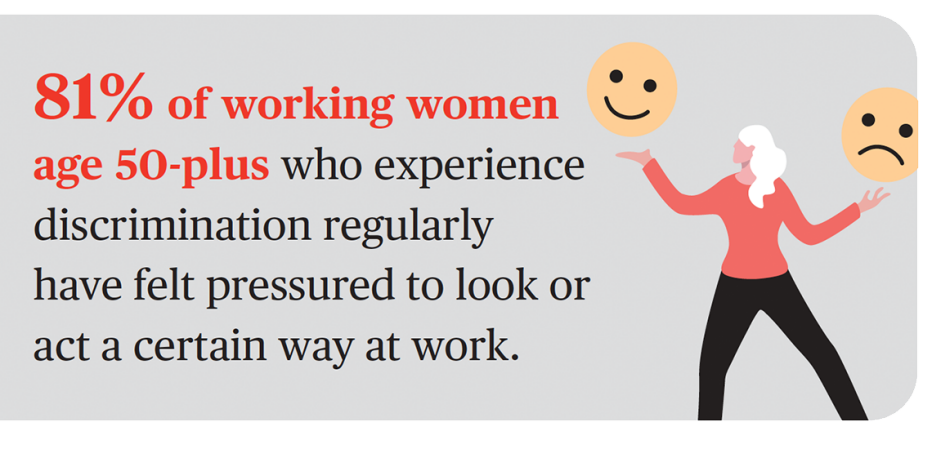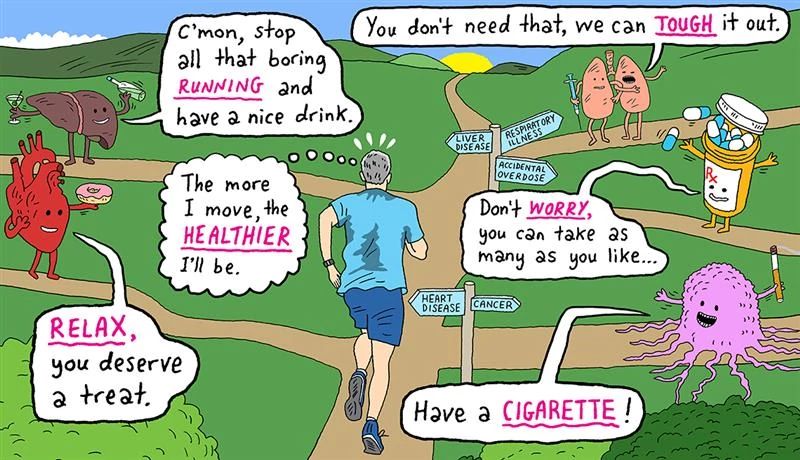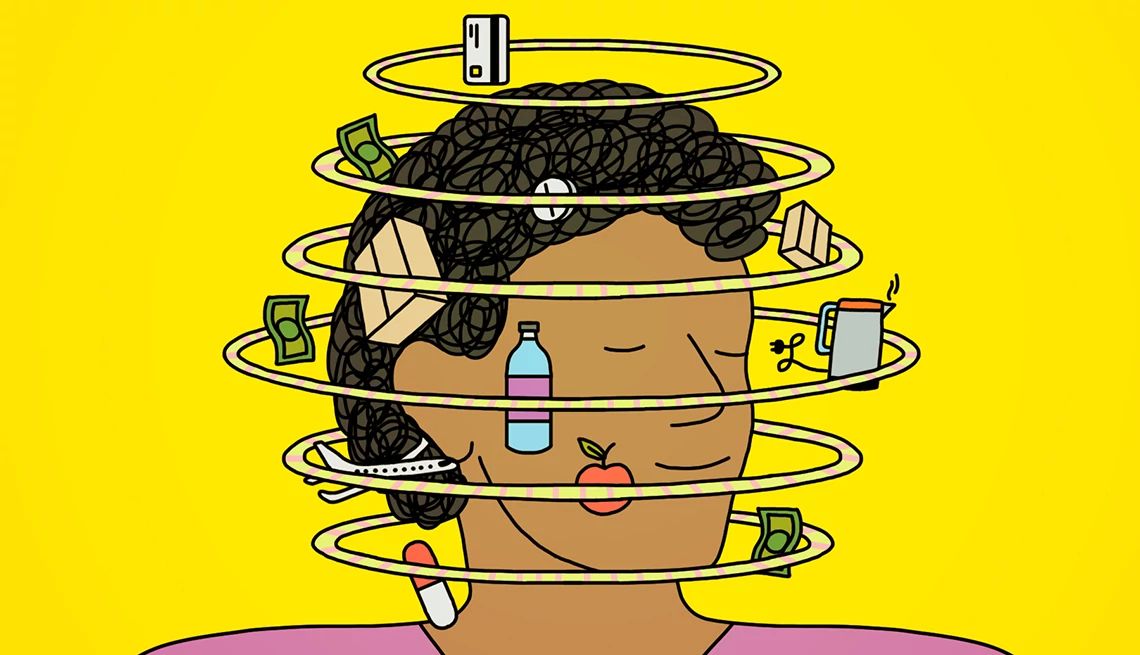AARP Hearing Center
Nearly 2 out of 3 women age 50 and older say they are regularly discriminated against, and those experiences appear to be taking a toll on their mental health, according to the latest "Mirror/Mirror" survey from AARP.
The poll of 6,643 women paints a disheartening picture of discrimination affecting women of all ages, ethnicities and races, with significant implications for their health and longevity.
Ageism was the most frequently reported type of discrimination among women 50 and older who experience discrimination regularly, with 48 percent reporting bias based on their age, according to the poll. Discrimination based on ethnicity/race/skin tone, weight, gender and social class was also widely reported.


AARP Membership— $12 for your first year when you sign up for Automatic Renewal
Get instant access to members-only products and hundreds of discounts, a free second membership, and a subscription to AARP the Magazine. Find out how much you could save in a year with a membership. Learn more.
“Surveys like this one are important because they show how common this is and that more has to be done,” says Yvette Peña, AARP vice president of Hispanic/Latino audience strategy in the Office of Diversity, Equity and Inclusion. “Women should not have to adapt their behavior to this discrimination against them.”
Discrimination has long been associated with health problems. Research reveals links to anxiety, depression, psychological distress, obesity, high blood pressure and substance abuse. More recent research has linked discrimination with cognitive decline in African Americans and Latinos.
In the AARP survey, those who said they regularly experience discrimination rate their current mental health lower, on average, than those who do not.
Other survey findings
The survey was conducted Oct. 22 through Nov. 30, 2021, and has a margin of error of +/- 2.0 percentage points. The poll also found the following:
- African American women 50-plus reported the highest levels of discrimination, with 70 percent saying they experience discrimination regularly, while about 60 percent of Latinas and Asian American/Pacific Islanders age 50 and older said they are regularly discriminated against.
- About 1 in 3 women (30 percent) experience age discrimination, and women 50-plus reported age discrimination at roughly the same rate as younger women.
- Sixty-nine percent of all respondents 18-plus said they regularly experience some type of discrimination.
- Among women who experience discrimination regularly, including those age 50 and older, discrimination based on weight appears to have the greatest impact on mental health.
- Women who experience discrimination regularly react by trying to adapt their behavior: 74 percent said they closely observe their surroundings, 58 percent carefully watch what they say and how they say it, and 51 percent consider feelings of safety and comfort in their everyday interactions.


Age-related discrimination persists
Although age discrimination has been illegal since 1967, the AARP survey indicates that it remains a problem for many older workers. About 30 percent of women 50-plus say they are discriminated against because of their age.
Ageism can take many forms, including incorrect assumptions about the abilities of older workers, social group segregation, coded comments and fewer opportunities for training or promotion.
One 58-year-old director at a technology company, who did not want to be named, said that after she was laid off a few years ago, she learned that a former colleague she considered a friend told others the layoffs were necessary because the company wanted a younger team. “It was hurtful that she looked at me that way, because I really liked her,” the woman said.
Even at her current company, the director said, she has faced biased remarks because of her age. One time, when she spoke up with an idea, a younger worker said, “That’s so old-school.”



































































